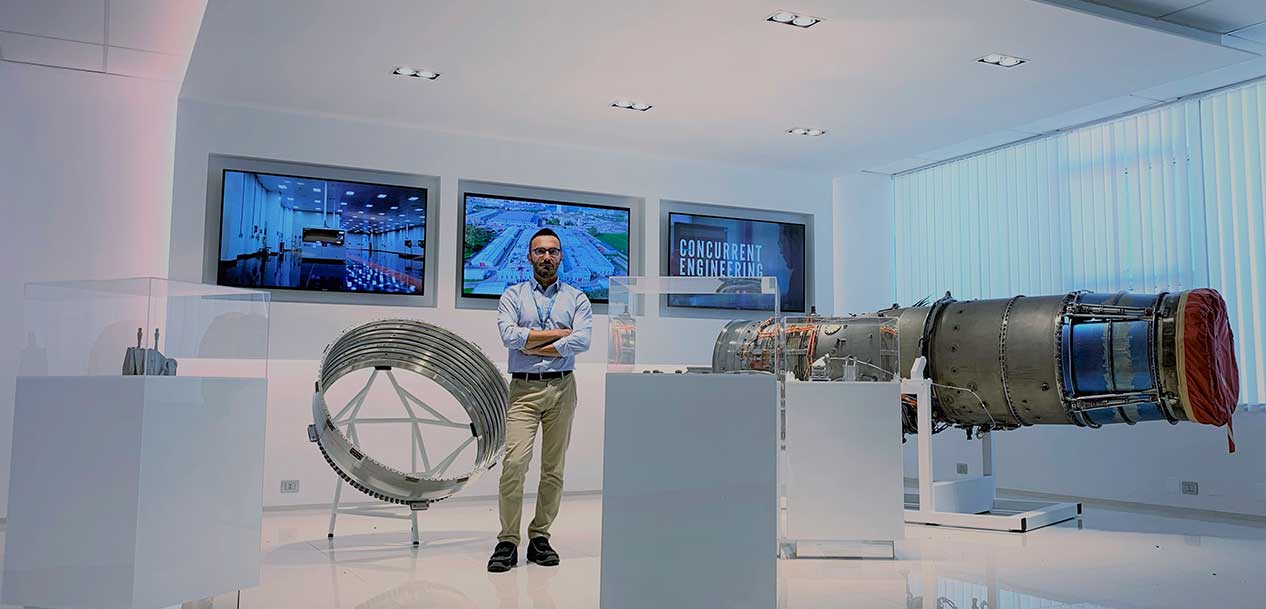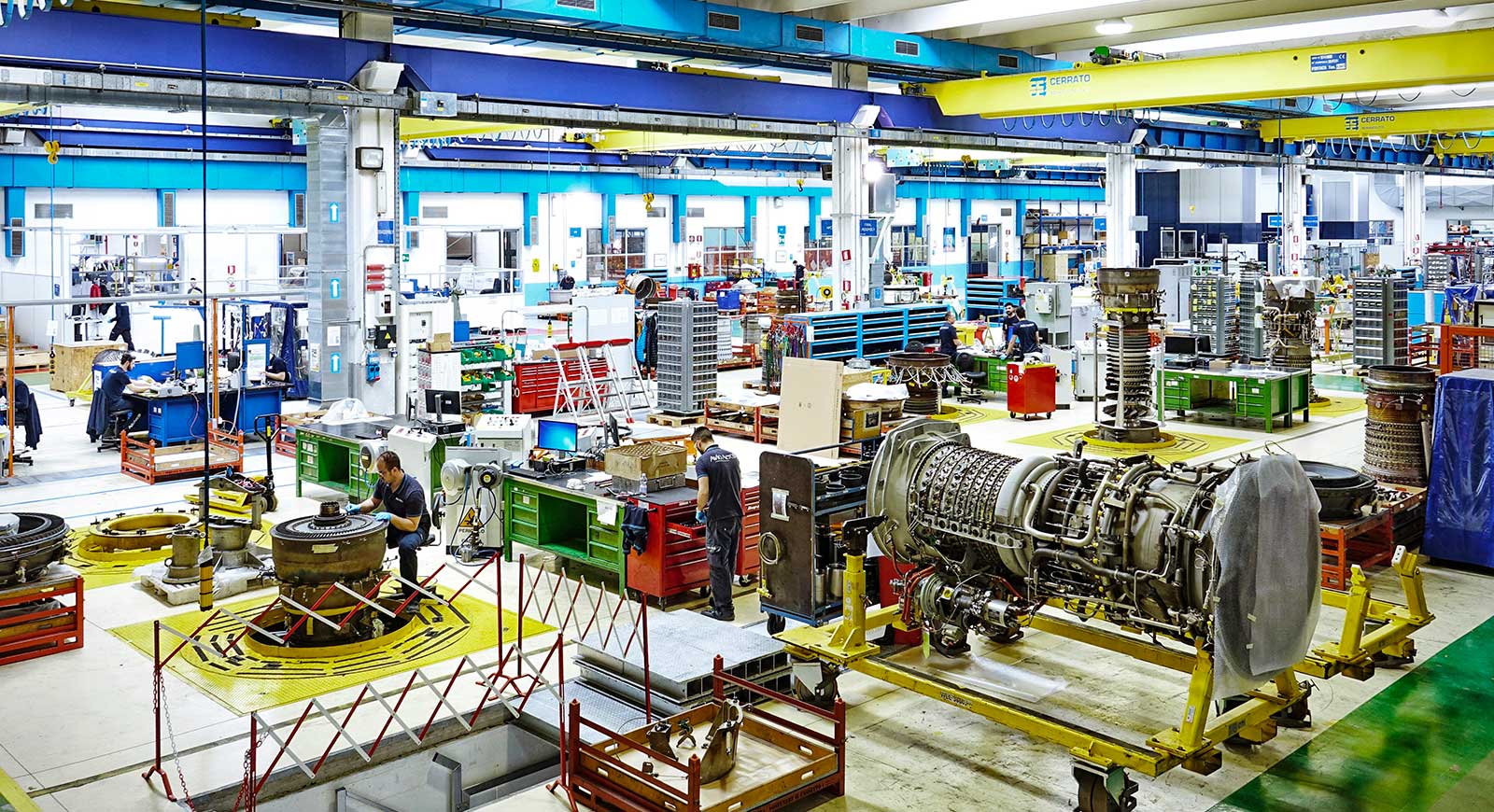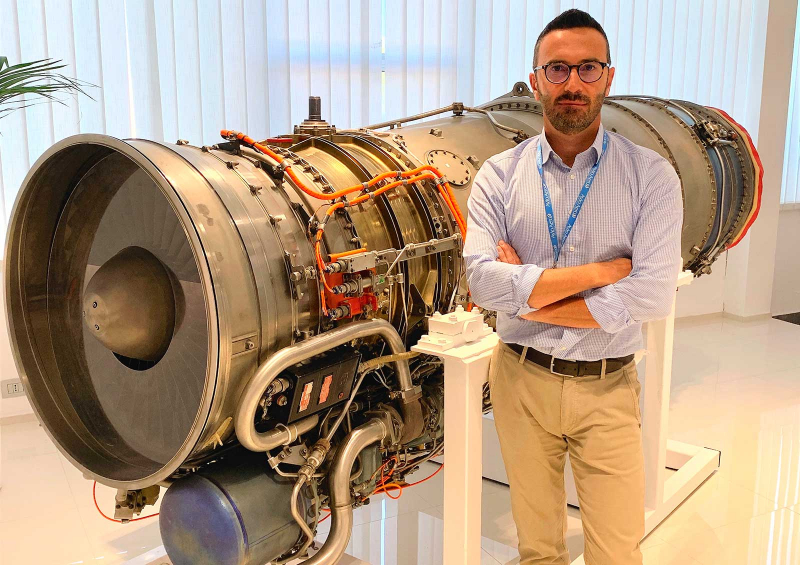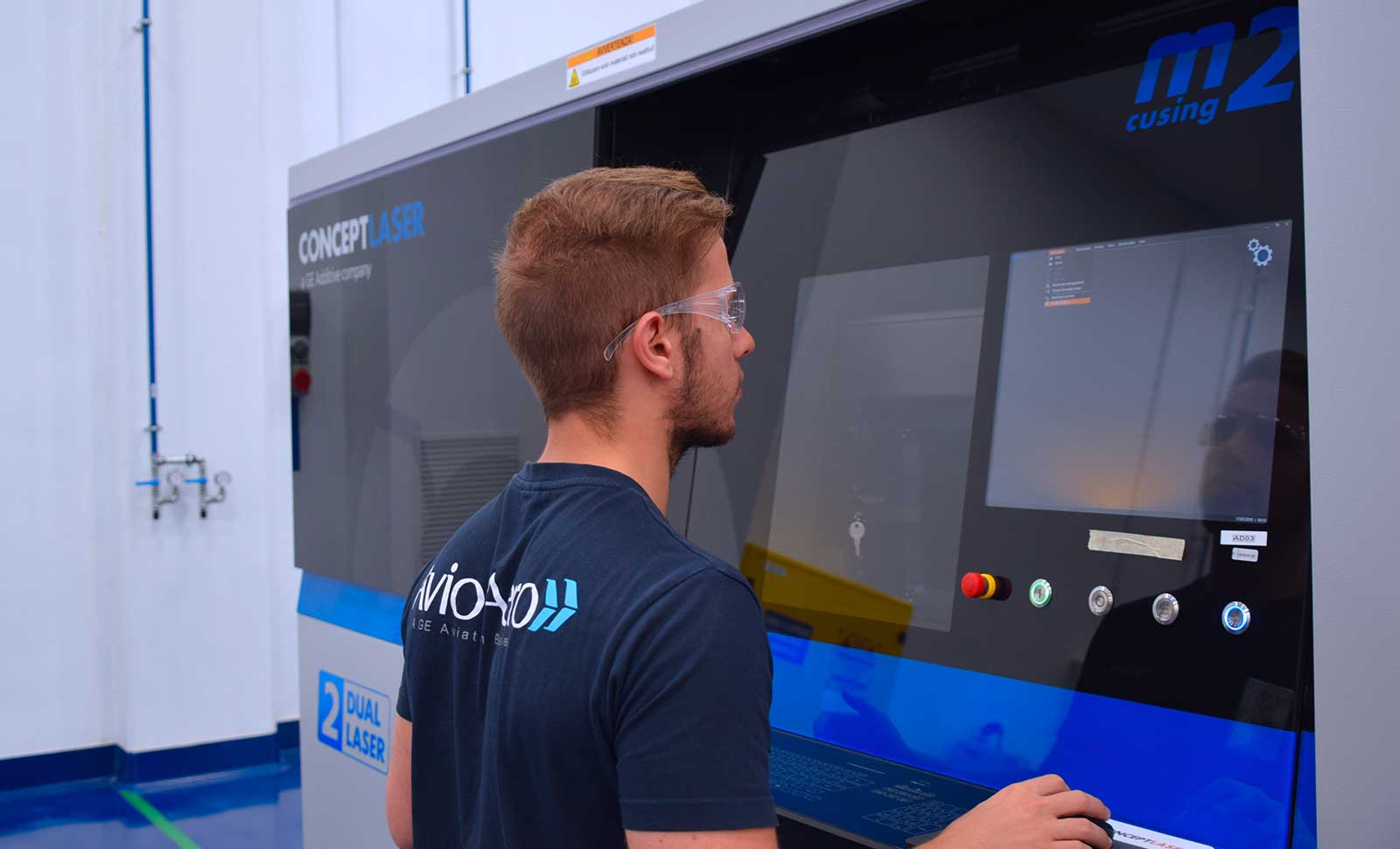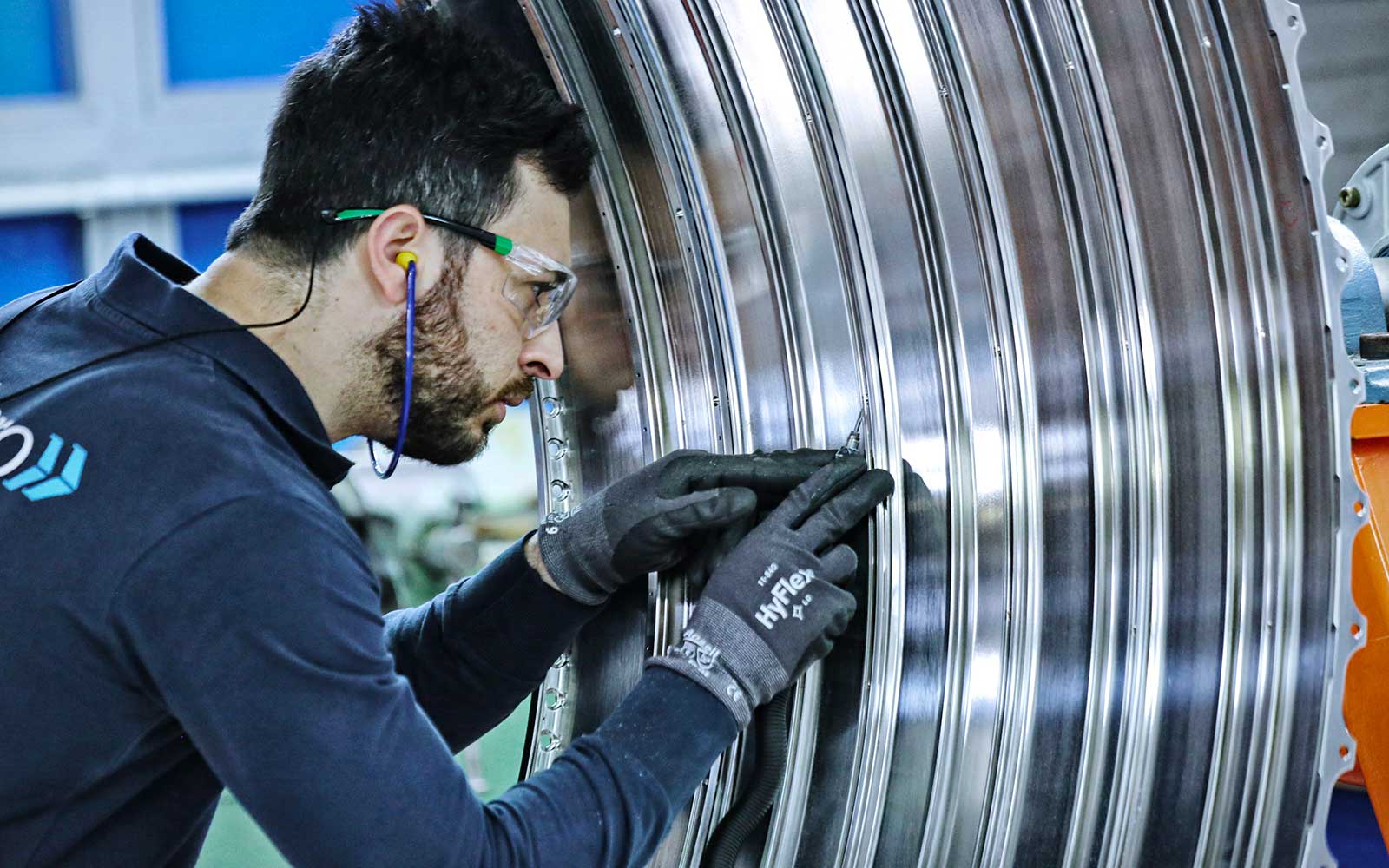Humans
In service for the sky
Cutting-edge technologies and a high level of expertise make Avio Aero an international point of reference for commercial aviation as well as the assembly and maintenance of engines for military use.
Jul 2020
Applied engineering, the production of new engine parts for commercial use, the assembly of complete engines for military aircraft, after-sales services and interfacing with international customers. A multitude of activities, managed within a single production site in Brindisi, whose peculiarity is that it can boast of having all the different divisions involved in the entire service life of the product.
Located in the Apulian province of Brindisi, the 54 thousand square meter Avio Aero facility employs a staff of about 700 people and provides its customers with traditional and innovative technological solutions, such as additive manufacturing (or rapid prototyping), in addition to high level automation techniques dedicated to the production of aeronautical engine turbines for commercial use as well as a highly skilled team capable of assembling and providing overhaul services for military turbo-jets, primarily for the Italian Armed Forces.
The facility in Puglia is, therefore, a strategic site, and together with other important plants in Pomigliano d'Arco (NA), Cameri (NO) and Poland it makes up the structure of the Avio Aero group, forming a team of over five thousand, of which 4,600 alone are based in Italy, along with the headquarters in Rivalta di Torino, also home to the largest production facility.
The challenge is to develop new technologies for aeronautical applications on architectures able to reduce energy consumption, make aeronautical engines increasingly more lightweight and allow for better performance. Through continuous investment in research and development and a consolidated network of relationships with major universities and international research centers, Avio Aero has developed a globally recognized level of technological and manufacturing excellence, as proven by the partnerships signed with the world's leading aviation companies.
"Producing, testing and maintaining a military turbojet such as the EJ200, which powers the Eurofighter Typhoon military fighter aircraft: an engine weighing 900 kilograms with a thrust/weight ratio of 10:1, allowing the aircraft to take off in 8 seconds and reach supersonic speed within 30 seconds, is enough to give an idea of the complexity of the activities and professionalism present at the Brindisi site - said Roberto Bertaina, Director of the Avio Aero plant in Brindisi - Our organization recognizes within itself all the skills involved in the entire service life of the engine, starting from engineering, through the production of components of new parts, and arriving at the final assembly of the engine before the testing phase and delivery to the customer.
As far as the production of components is concerned, in recent years there has been a real paradigm shift, through the transformation from a production of a few hundred engines per year, to one dictated by the innovative LEAP engine, which powers the regional aircraft of Boeing and Airbus, with high efficiency and low fuel consumption, whose demand in 2019 alone rose to around 1500 units. We are therefore talking about numbers closer to typical production lots in the automotive sector, which led Avio Aero to invest in automation, over $100 million on 4 fully automated lines, dedicated to the manufacture of this new turbofan developed by CFM International (a joint venture of GE Aviation and Safran).
"These investments have guaranteed us maximum flexibility, machine capacity utilization close to 100% and time for setup, now performed outside the plant, reduced to zero, allowing pieces to be handled without the presence of operators, despite the highly significant size of the product, transported on automated pallets to lines supplied by FMS systems” he continued. “Within the production department we have machines for roughing the pieces, followed by finishing in the milling, drilling and turning centers.” “We are talking, specifically, about the machining of external casings of the low pressure turbine, with maximum dimensions of 2.5 meters in diameter, using materials such as super nickel alloys or Inconel castings, with thicknesses ranging from 1 to 3 millimeters, accuracies in the order of 2-5 hundredths of a millimeter, down to 5 thousandths in drilling.”
The training aspect for personnel who work in the facility is a distinctive factor that achieve excellence in the service division, quality as well in an intrinsic item for both our culture and processes
Cutting-edge techniques. In addition to this organizational complexity, following a precise corporate strategy, Avio Aero has decided to use the new additive manufacturing technology, of which the Group has been a pioneer in its development. In fact, the actual molding is carried out in the production departments at Brindisi, during which the piece is created by successive layers, followed by a series of post-processing operations such as wire EDM, heat treatments for stress relief and testing, performed with very sophisticated techniques, such as tomography.
"The use of additive manufacturing allows us to melt alloys that normally cannot be melted with traditional techniques, achieving forms that are much more complex and which come closer and closer to the ideal geometries in the minds of designers than those that can be obtained with the classic chip removal methods and were impossible to achieve until just a few years ago - explained Bertaina. , thereby allowing many parts not to be discarded, but to be re-introduced to the operating cycle of the thrusters".
A second large area of Avio Aero's Apulian facility is dedicated to service, where all activities related to aircraft engine maintenance are managed, following the standard procedures of the various armed forces, Italian first and foremost. Upon receipt of the engine, disassembly begins (often with more than 1500 basic components), followed by the replacement of parts no longer in good working order, before reassembly, trials and testing and, finally, shipment to customers. "Here the strategic challenge is to develop the ability, on our part, to predict future events today, that is, to understand in advance which parts we will need to have in house to repair an engine based on its specifications and maintenance plans, reducing costs and delivery times,” he emphasized. “To achieve this type of capacity, we have established a strong synergy between production and engineering, which together are developing increasingly more advanced tools, to manage the fleet. We are talking about statistical tools that, taking into account the operating scenario of the engines (military, often operating in specific and extreme situations), allow us to predict the condition of the engine when it comes to us; therefore, to anticipate what parts will be the most worn, allowing us to be ready to replace or repair them in the shortest possible time".
At the same time, in recent years, the Brindisi facility has also focused heavily on RFID radio frequency instruments, which allow the complete tracking of the thousands of individual parts which result from the disassembly of the engine and allowing their immediate identification within the plant during the reassembly phases.
Since the reliability of the aeronautical product is directly related to the safety of people during flight, attention to quality must be an intrinsic element in the corporate culture and processes. "At the Brindisi site, controls are carried out starting with checking the incoming components, passing through intermediate geometrical and dimensional analysis, to then arrive at Quality control carried out using sophisticated instruments, in some cases redundant, at the end of the production process in order to guarantee the highest quality in full compliance with the strict requirements deriving from the international aeronautical regulations,” continued Bertaina. “In some cases, and especially so for military products, a further testing is carried out directly with the customer "on site", in the presence of their representatives at our plant.”
Lastly, but certainly not least, is the training aspect for personnel who work in the facility and who achieve excellence in the service division. The disassembly, maintenance, reassembly and testing of an ultra-high performance turbojet requires an extremely high skillset, so much so that the majority of personnel have more than twenty years of experience, which allows for adequate support in the training of young resources. Inside the site in Puglia, there is a rigorous training system that involves not only technical expertise on the operation of turbojets but also courses such as metrology, mechanical processing, non-destructive testing, followed by on-the-job training cycles with the support of already qualified personnel. For qualifications with higher technical content, the training can last up to 1 year.
"As a result of this difficult situation dictated by the Covid19 pandemic, since Avio Aero was operating within strategic activities for the country, we were forced to be immediately reactive from the first day of lockdown,” he concluded. “A system of safety measures was put in place in compliance with the protocols of the Ministry of Health, starting from measuring the body temperature of employees, (now a consolidated operation but which, on March 11, was far from simple), or the provision of PPE, as well as all those measures put in place to facilitate work, such as smart working, where possible, or the management of social distancing between employees, never making it possible for people from different departments to come into contact with each other for reasons of safety and the continuity of operations.”
The original version of this interview is by Tecnologie Meccaniche - TECHMECH.it


